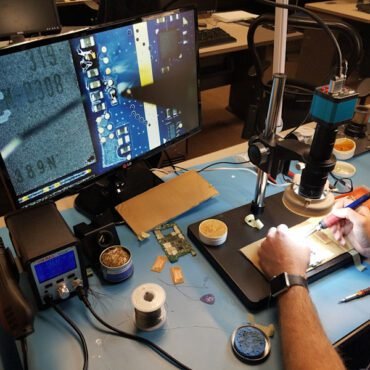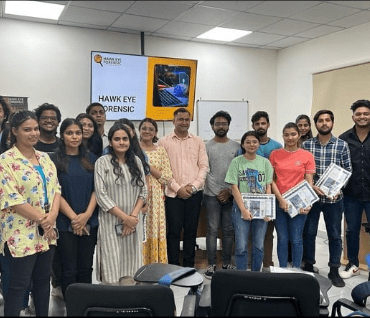In the last decade, the way people communicate has undergone a massive transformation. Social media platforms and gaming applications have become central to how individuals connect, collaborate, and even conduct business. While these platforms were designed for entertainment and interaction, they have also turned into digital ecosystems where crimes can occur without physical contact.
From fraudsters running scams on Instagram, to criminals laundering money through in-game currencies, to child predators exploiting online gaming chats, investigators are facing new forensic challenges every day. This has led to the rise of social media and gaming app forensics, a specialized branch of digital forensics that focuses on uncovering hidden evidence within these platforms.
This blog explores the importance, methods, challenges, legal perspectives, and future of social media and gaming app forensics, with real-world examples and insights into investigative techniques.
Social Media Forensics: Beyond Likes and Shares
Social media forensics is the process of collecting, preserving, analyzing, and presenting evidence from platforms like Facebook, Instagram, WhatsApp, Telegram, Snapchat, LinkedIn, and Twitter (now X).
While most people view these platforms as spaces for personal updates or entertainment, investigators see them as digital gold mines of evidence. Every action—be it a like, comment, share, direct message, or geotag—leaves a digital trace that can help reconstruct events.
Key Areas of Social Media Forensics
-
Chat History and Private Messaging
-
Deleted or archived chats often contain the most critical evidence.
-
Platforms like WhatsApp, Instagram, and Messenger store traces of communication that can be recovered using forensic tools.
-
Multimedia Analysis
-
Photos, videos, and voice notes are examined for authenticity, manipulation, and metadata.
-
Forensic experts can detect deepfakes or doctored content.
-
Metadata Extraction
-
Every file carries hidden details like creation date, geolocation, device ID, and sender information.
-
Metadata often helps establish where and when an activity occurred.
-
Fake Profiles and Impersonation
-
Social media forensics assists in tracking fake accounts used for fraud, scams, or harassment.
-
Investigators can link multiple fake profiles back to a single user through IP logs and device IDs.
-
Location Tracking
Common Use Cases in Legal Investigations
-
Cyberbullying and Harassment Cases – Proving threats and abusive communication.
-
Financial Fraud – Fake investment schemes promoted via social media.
-
Corporate Espionage – Leakage of confidential data via LinkedIn or internal groups.
-
Criminal Investigations – Terrorist propaganda, radicalization, and planning on Telegram or Twitter (X).
Gaming App Forensics: More Than Just Play
Online gaming has evolved from being a hobby to a multi-billion-dollar global industry. Platforms like PUBG, Free Fire, Fortnite, Roblox, Call of Duty Mobile, and Discord-linked games attract millions of daily users. These aren’t just games—they’re social ecosystems where players interact in real time through chats, voice messages, and trading systems.
Unfortunately, criminals have found ways to misuse these apps:
-
Money Laundering: Converting illicit money into in-game credits or skins, which are later sold for real currency.
-
Child Exploitation: Predators use gaming chats to target minors.
-
Terrorist Communication: Encrypted game chats have allegedly been used for planning.
-
Virtual Asset Theft: Stolen gaming accounts with rare skins or items are traded on the black market.
Gaming app forensics aims to extract logs, recover deleted conversations, trace purchases, and identify linked accounts to expose unlawful activity.
Techniques Used in Social Media & Gaming App Forensics
To gather and authenticate digital evidence, forensic experts employ a combination of manual investigation, forensic tools, and AI-driven analytics.
1. Data Acquisition
-
Imaging entire devices (computers, smartphones, consoles) without altering the data.
-
Cloud-based evidence collection using lawful requests.
2. Chat & Communication Recovery
3. Metadata Analysis
4. Timeline Reconstruction
5. Cross-Platform Linking
6. AI & Machine Learning
Challenges in Social Media & Gaming Forensics
While the potential for evidence is enormous, investigators face several challenges:
-
End-to-End Encryption
-
Jurisdictional Issues
-
Constant App Updates
-
Data Volume
-
Anonymity and Fake Identities
-
Privacy & Ethical Concerns
The Future of Social Media & Gaming Forensics
The landscape is evolving, and forensic science must evolve with it:
-
Metaverse Forensics
-
Deepfake Detection Tools
-
NFT & Cryptocurrency Tracking
-
Automated Forensic Platforms
-
Cross-Border Digital Evidence Frameworks
Conclusion
Social media and gaming apps have redefined human interaction, but they’ve also opened new doors for cybercrime and digital exploitation. From tracing deleted WhatsApp messages in a fraud case to uncovering covert communications in online gaming chat rooms, forensic experts are at the frontline of truth discovery in the digital age.
By using advanced forensic techniques, ensuring legal admissibility, and embracing AI-driven innovations, social media & gaming app forensics will continue to play a critical role in law enforcement, cybersecurity, and justice delivery worldwide.
As digital interactions keep expanding, one fact remains constant—every digital footprint leaves a trace, and forensic science ensures that even in the virtual world, justice can prevail.





Post comments (0)